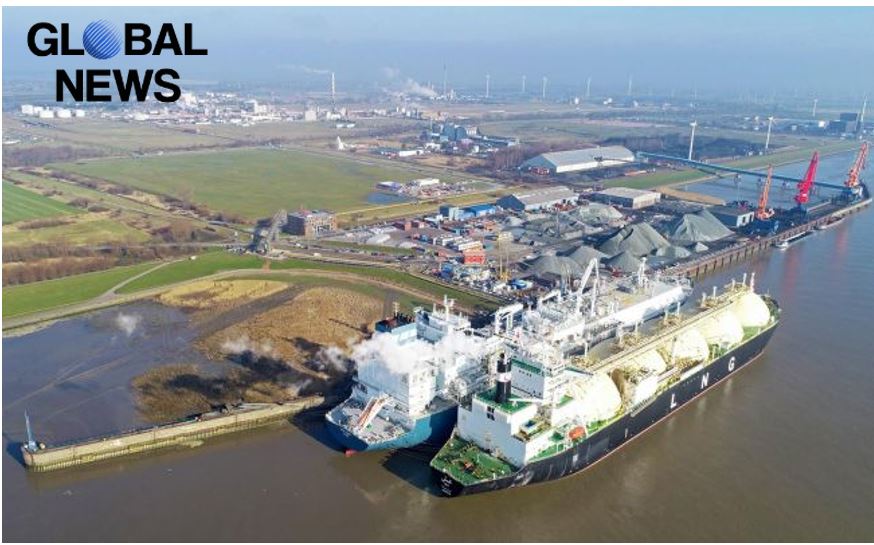Germany plans to increase the number of LNG terminals, but this winter the country idled more than half of the capacity of terminals already in operation. On the one hand, Europe has had a warm winter. On the other, LNG imports have become an expensive substitute for Russian gas. The head of Germany’s RWE sees not a strong recovery in demand ahead, but a destruction of demand in energy-intensive industries.
From 1 November to 31 March, German LNG terminals were less than half loaded. Instead of a possible 5.43 billion cubic meters, Germany took in 2.69 billion cubic meters, according to GIE. The private terminal in Lubmin had the lowest performance. During the winter it was loaded on average by only 13.5 per cent, while the state-owned terminals in Wilhelmshaven and Brunsbüttel were loaded by 74-76 per cent.
As a result, Germany’s current gas imports during the heating season were supported by direct LNG shipments by only 7 per cent, according to the Federal Network Agency. At the same time, Norwegian deliveries accounted for 46.6% – 17.9 billion cubic meters.
Obviously, the country’s supply of regasified LNG is higher, as German companies started utilising capacity in the Netherlands and Belgium even earlier. However, they still cannot compete with supplies from Norway.
Reuters, citing documents from the German economy ministry, reported that by 2030 there should be only six LNG terminals in Germany. One private one in Lubmin with capacity expansion to 10 billion cubic meters. And five with a capacity of 27 billion cubic meters – with public funds. The German Ministry of Economic Affairs estimated that the cost of taxpayers’ money would be 9.8 billion euros, and this figure is inconclusive.
However, even the current capacity is already sufficient, as German companies are not enthusiastic about LNG. Obviously, German companies do not have to choose from which sources to increase their imports. Russian gas supplies stopped at the end of August 2022 due to sanctions and counter-sanctions, and Berlin is unlikely to make a political decision to launch the surviving string of Nord Stream 2.
For German companies, this has very concrete consequences.
“Gas prices in continental Europe, especially in Germany, are structurally higher now because we are, after all, dependent on LNG imports. For Germany, this is a disadvantage,” Markus Kebber, head of German energy giant RWE, told The Financial Times.
Gas prices have fallen significantly since the peak of the energy crisis and have been trading around $300 per thousand cubic meters for several months. However, RWE is not optimistic about the country’s fuel demand.
“You’re going to see a recovery in demand, and I think we’re going to see a significant structural collapse in demand in energy-intensive sectors,” said Markus Kebber.
Samantha Dart, head of natural gas research at Goldman Sachs, also believes that some industrial capacity in Europe will no longer recover. In her view, “getting back to pre-crisis levels is the bigger challenge.”
As The Financial Times notes, a survey conducted by the German Chamber of Commerce and Industry in September 2023 showed that 43% of large industrial companies plan to move their operations outside Germany, with the US as a priority.
On the one hand, gas prices are at least three times lower. At the same time, the Inflation Act allows for subsidies and tax breaks.
“German companies announced a record $15.7bn of capital investment in US projects last year, up significantly from $8.2bn the year before. This eclipsed any other overseas destination,” The Financial Times quoted fDi Markets as saying.
1,554 total views, 2 views today



